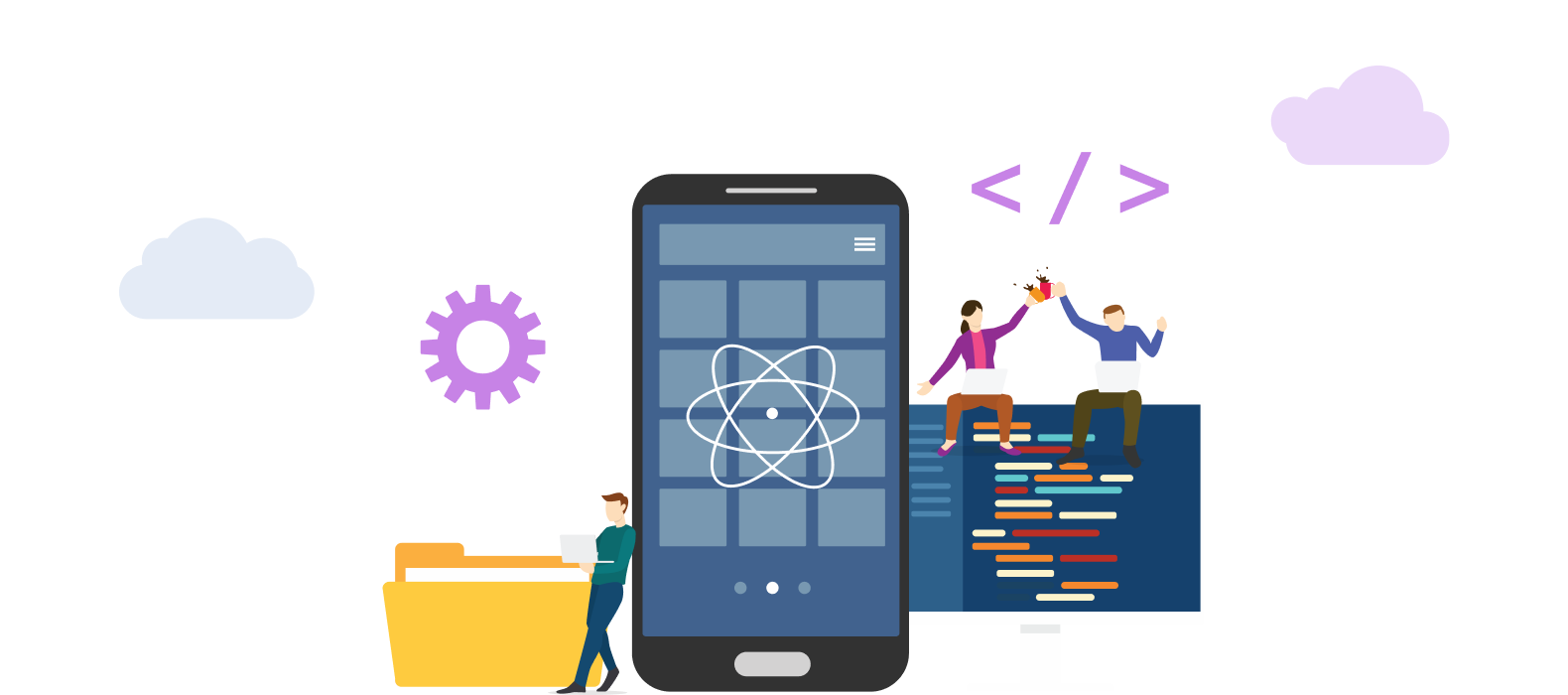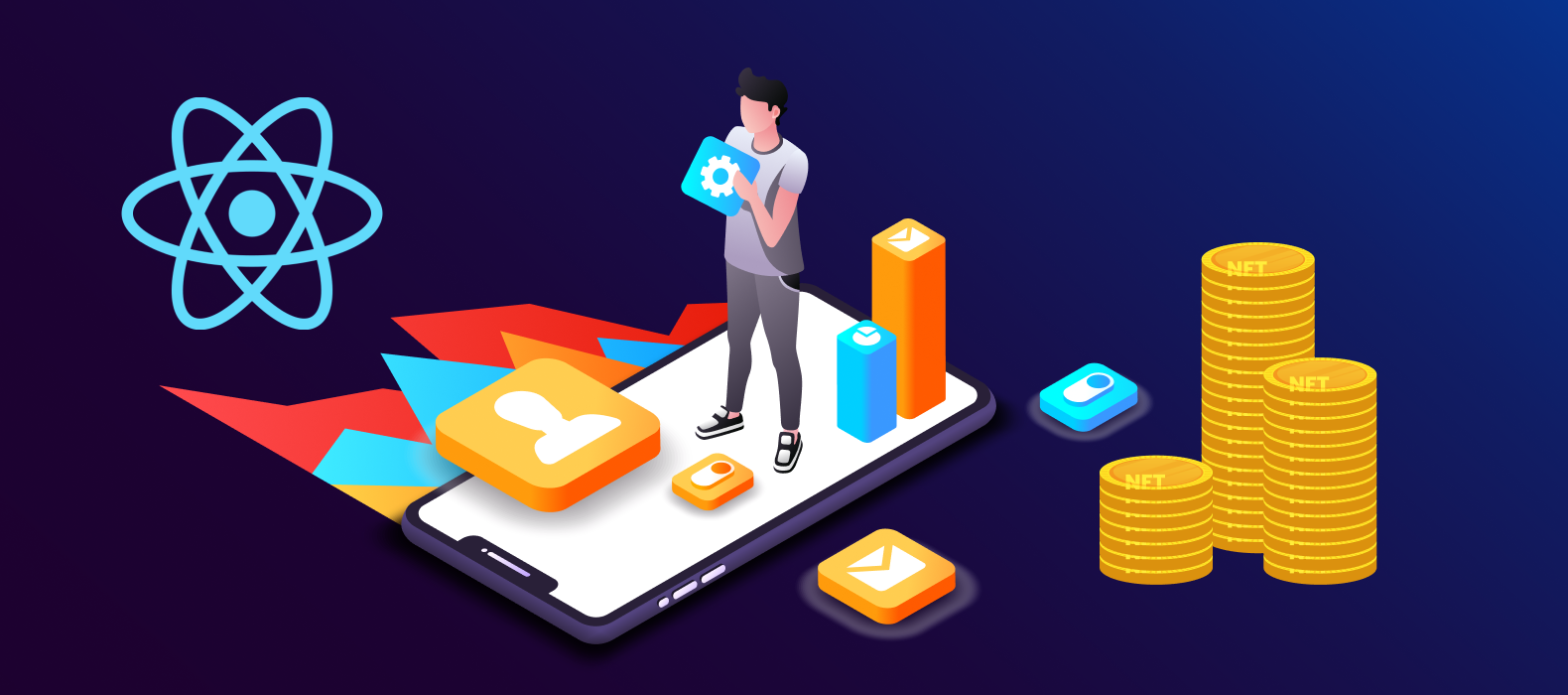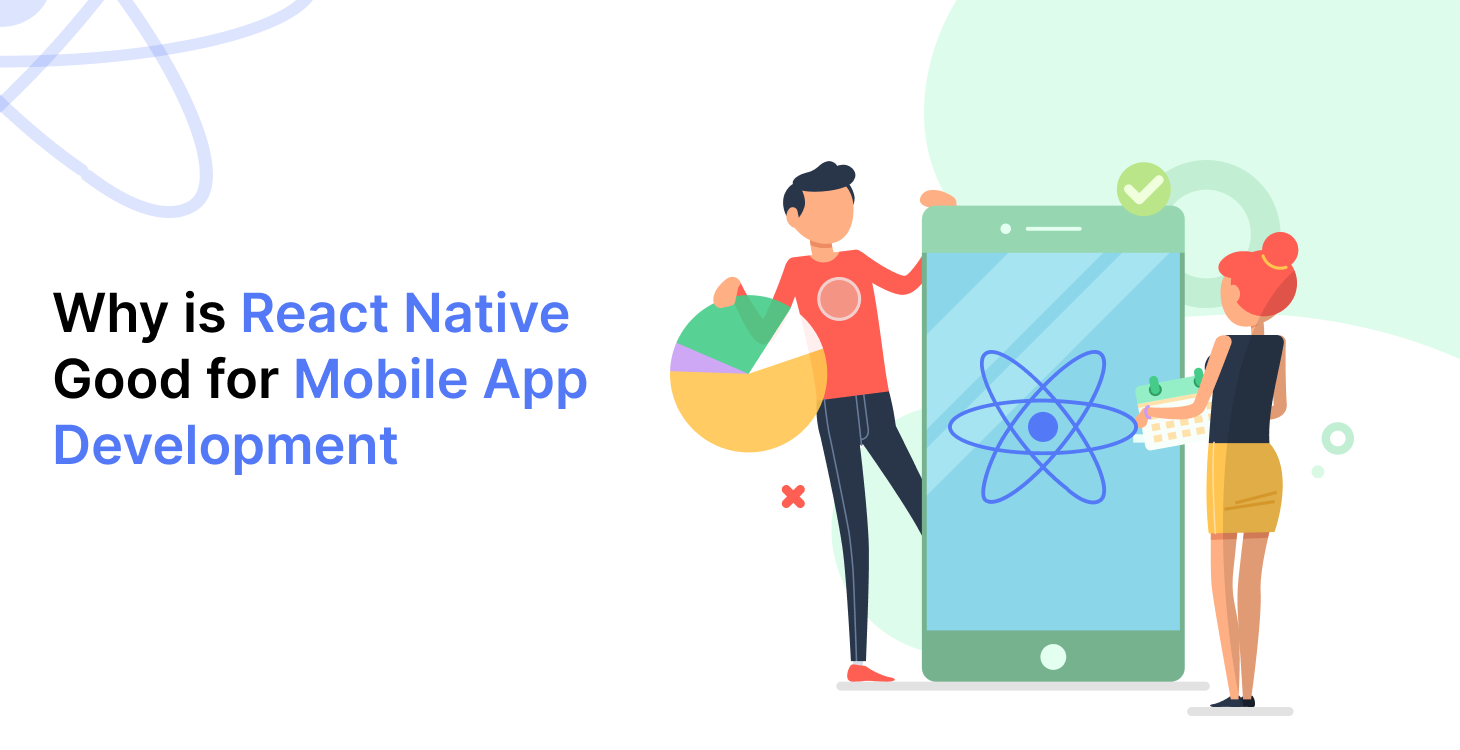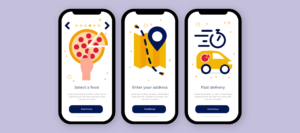10 Best Reasons Why React Native for Mobile App Development- Features, Cost and Examples in 2023
Do you want to build a mobile application quickly? Look no further than React Native. React Native is a development framework used by mobile app developers to save time and build mobile apps more quickly.
React Native for Mobile App Development has taken the industry by storm, particularly among those more technologically savvy. According to Statista, the Google Play Store has approximately 3.3 million apps, and the App Store has approximately 2.1 million. Such a large number of mobile apps demonstrates the scope of the current mobile software development market. At first glance, there are two primary options for app development: Android-based apps for the Google Play Store and iOS-based apps for the App Store. It was true for a long time. However, a third option is now available: cross-platform app development.
React Native for mobile app development is an exciting framework that enables web developers to create robust mobile applications using their existing JavaScript knowledge without sacrificing the end user’s experience or application quality. Because React Native renders APIs using the standard of its host platform, any React Native App Development Company will want to offer faster mobile development and more efficient code sharing across iOS, Android, and the Web.
This blog post will discuss React Native, one of the most effective development solutions, and why it is an ideal framework for business mobile app development.
Let’s get started!
Why Choose React Native for Mobile App Development?

React Native was long regarded as being economically unviable. It wasn’t sufficiently developed or supported to result in “native-like” apps.
However, times have evolved. Popularity, community support, and market share for React Native are all growing. The world is noticing how simple it is to create amazing apps using React Native. For choosing React Native for mobile app development, see the list of top reasons below:
1. Provides cross-platform mobile app development:
It enables you to create apps for iOS and Android using the same code. As a result, it produces the same quality performance without further adjustments. You may quickly create a mobile application for your type of business. There is no longer a need for various languages like Java, Swift, C++, or any other. You only require a JavaScript programmer with extensive knowledge of native UI libraries, APIs, and hybrid mobile app development.
2. Trustworthy:
Facebook created a mobile app to test the platform’s viability before React Native was created and released. It enabled its programmers to create an incredible mobile application for the social media platform.
Now that everyone has a smartphone, utilizing the Facebook app gives you the impression that you are using a React Native for mobile app development. Since React Native became open-source, more businesses have begun utilizing it to create mobile applications. Examples include Walmart, Skype, Instagram, and other services.
3. Memory is used far less than usual:
React Native tools offer a smoother run-time and are compatible with third-party plugins. The profitable framework makes it considerably easier for third parties to participate because of its well-diversified modules. It is simple to connect the module to the plugin using the native module without using WebView. This stage is closely related to the app’s response speed-enhancing features. As cross-bridge linking is unnecessary and most of the codes are used during run-time, React native for iOS, and Android platforms use substantially less memory.
4. Assistance for third-party plugins:
React Native for mobile app development provides support for third-party plugins. The two sorts of plugins that can be used are JavaScript and Native Modules. For example, you could use React Native to link to any plugin with a Native or third-party module if you wanted to add Google Calendar or Google Maps to your basic app.
5. Make use of your familiar terminology:
For React Native apps to be made, less specific knowledge is required. You already have a JavaScript programmer on your team, perhaps even one specializing in ReactJS. Compared to professionals with expertise in Java or Swift, JS developers are simpler to find.
Even if your front-end developer has never worked with React Native, they can pick it up relatively fast with a bit of self-education, especially if they have experience with React. Finding which online components match which mobile components only takes a little time on Google, and you’re good to go.
6. A futuristic and flexible approach to project management:
One line of code can be used to fix errors and continue to develop a framework that interfaces with both iOS and Android. Despite having straightforward operations, this product has been on the market for a while. All significant heads use this module; thus, it is more dependable and responsive.
You have a platform with react native app development where you can monitor memory spacing and optimize the application. The cherry on top is being able to develop for both iOS and platforms using the same codes.
7. Rich UI:
React Native enables you to create unique and compelling user interfaces using pre-built declarative components such as Buttons, Picker, Slider, Switch, etc. You can create your components by combining TouchableNativeFeedback and TouchableOpacity.
Numerous other Android and iOS-specific components are available to ensure that it runs smoothly on iOS and Android mobile devices.
8. Publish App Updates More Frequently:
Previously, publishing app updates took much longer because developers had to go through the build process again for each app separately. That process has been streamlined with React Native for mobile app development. Not only can both apps be updated simultaneously, but the entire process is much simpler and faster. Developers implement improvements and updates for your users via over-the-air (OTA) updates, which are implemented even while users are using the app. The update will then be available to the user the next time the app is launched. There is no longer a need to update the app through the app stores manually and have them approved by Apple or Android, which saves time and streamlines the process.
9. Hot and Live Reloading:
At its core, React Native has a hot and live reloading function. Developers can use this feature to work with code changes in real time and fix them while the application is loading.
While hot reloading only reloads a specific area of the change, the live feature reloads the entire application after making changes. This makes development and testing easier.
10. Multiple outcomes and adaptability under one simple solution:
Based on ideas, React Native for mobile app development enables you to perform complex tasks with simple codes. This framework uses Facebook’s UI library to create more specific codes for implementing and executing ReactJS. The ‘Live Reload’ feature is at the heart of the react native mobile app developer. It enables us to make code changes in real-time and make corrections while the app is loading.
What are the features of React Native for Mobile App Development

Hiring React, iOS, or Android developers can be challenging. However, understanding the general features of a React Native for mobile app development framework simplifies the process. Without further ado, here are the most critical aspects of React Native mobile development:
1. Free and Open Source:
It’s encouraging to know that, like many other (famous) open-source projects, similar technology is used by hundreds, if not millions, of people worldwide. Similar challenges and flaws are being discovered in React Native. A slew of developers frequently responds to inquiries, even pointing out bugs and recommending fixes before anyone notices them. Furthermore, forums are full of helpful hints and solutions that are a big hit with beginners and mid-level professionals.
2. Tried and tested:
React Native is one of the mobile app development frameworks that a large developer community trusts. This framework also benefits from the Facebook factor. The Facebook brand image helps React Native become a trustworthy name in the app development industry. All Facebook mobile applications are built with React Native. React Native has also been used by well-known companies such as Airbnb, Wal-Mart, and Tesla. All of this increases the developers’ trust.
3. Enhance Development:
One of the most compelling reasons for Facebook to make React mandatory is faster development. Loading a React page takes significantly less time than loading a standard Javascript page. It is one of the essential React Native features because it implies that visitors will view React-generated pages faster than other pages and are less likely to abandon them. Furthermore, it means that Google will scan these pages faster and give them a higher score.
4. One-way data binding:
The feature connects a user interface element to a specific data piece. The process is one-way, ensuring better app control. Put, one-way data binding ensures that a single change does not affect the app’s code.
5. High Performance for Mobile Environments:
React Native’s architecture is well-suited to mobile devices. It makes use of the GPU (Graphics Processing Unit), whereas native platforms are more ‘CPU (Central Processing Unit) intensive. React Native is much faster than hybrid technologies, previously the only option for cross-platform development.
6. Community Support:
React Native has one of the most influential communities in the cross-platform mobile app development platform.
Today, it is one of the most popular platforms, with developers from all over the world contributing, resulting in a strong community presence.
7. Accessibility:
The React Native for mobile app development build is more accessible. The announcement for the Accessibility API has advanced from the previous one. Changes have also been made to roles, action support, flags, and many other areas. Other improvements include support for “reduction motion,” improved Android keyboard accessibility options, CALayer for drawing text, etc.
These features are at the core of React Native for mobile app development, ensuring that the app created with the framework is responsive and provides the best user experience possible.
Cost of React Native for Mobile App Development

Whether you’re a startup or an A-list brand with a tight budget, you still need an application. They should pursue cross-platform development, notably React Native for mobile app development. React Native is a fantastic option and a solid framework.
However, it can be challenging to provide an actual cost estimate for developing React Native apps, just like any other mobile project. The total cost of the application may vary depending on the complexity, feature set, number of hours spent writing the code, developers’ hourly rates, distribution channels, etc., of the app. Additionally, the location of the organization that develops Reacts Native mobile apps impacts the overall development cost.
| App Type | Estimated Cost | Estimated Time |
| Simple | $15,000 to $25,000 | 4-5 months |
| Moderately Complex | $25,000 to $60,000 | 5-9 months |
| Complex | $60,000 to $200,000 | 10-12 months |
Examples of React Native Mobile Apps

These are top-notch apps that generate enormous income and enjoy tremendous popularity worldwide. There are around 1 billion active users on Instagram alone. It is clear now that React Native for mobile app development is a popular choice among many businesses. So here are some of the following notable React Native mobile application examples:
1. Facebook:
Given that Facebook invented the React Native programming language and was the driving force behind its development, it should be no surprise that it is one of the most well-known React Native applications.
React Native for mobile app development was created due to Facebook’s efforts to bring all the advantages of web development to mobile, including quick iterations and having a single product development team. The business utilized it to produce its iOS and Android versions of the Ads Manager app, both of which were made by the same development team.
2. Shopify:
Shopify is an excellent eCommerce platform for international customers. The early Shopify team saw the potential of React Native. However, they refused to convert their native app to React Native due to a lack of first-class Android support.
It wasn’t until 2019 that Shopify tried out three React Native apps (Arrive, Point of Sale, and Compass). Three development teams recognized some of the framework’s advantages:
- Over 80% of code was shared between iOS and Android, saving significant development time; team members felt more productive than native development; and React Native enabled teams to set a lower CPU threshold than anticipated.
- Shopify went deeper into React Native after receiving positive feedback. The framework enables them to create high-performance apps that meet the higher expectations of retail merchants.
3. Instagram:
Moving an existing app to new technology is undoubtedly tricky. Because the Instagram app has a simple user interface, they found it easier to adopt new technology. The main benefit of using React Native on the app was that it was simple to maintain on Android and iOS platforms.
4. Pinterest:
In 2018, Pinterest began investing in React Native for mobile app development. They are one of the most widely used image-sharing applications. The most significant advantage of React Native at Pinterest has increased developer velocity.
This framework, in particular, enabled the team to share 100% of the code between iOS and Android. So the engineering team needed 10 days to build the iOS version and another two days to build the Android version. The team saved more than a week of development time by sharing code.
Furthermore, it reduced overheads and meeting times when Pinterest had to establish two separate development teams. Sharing code also helped in maintaining consistency between the two platforms.
5. Myntra:
Myntra is an example of a mobile-friendly online shopping portal. The app makes mobile shopping very convenient, from the perfect look and feels to the best user experience. React Native for mobile app development provides a fantastic UI and UX to Android and iOS apps with a beautiful presentation of catalogs, profiles, and order placement.
Is React Native Good for Mobile App Development
Even after learning about some of React Native’s features, are you still unsure whether you should implement it into your project? Here are some things it can assist you with:

1. Reduce costs and time:
React Native for mobile app development is the finest technology available if you need to create an app that works on both iOS and Android. You can save time and money by reducing the codebase by roughly 95%. Several open-source libraries of pre-built components are also available for React Native, which can help you accelerate the development process even further.
2. Immediately View Changes:
Developers can instantly see the changes they’ve made to the code in another live preview window simultaneously with React Native’s “live reloading” or “hot reloading” feature. Developers can benefit from this because of the immediate feedback.
3. Responsive mobile apps:
React Native for mobile app development makes it easier to build responsive, elegant user interfaces for mobile applications while also speeding up load times.
4. Add third-party plugins:
Additionally, React Native makes it simple to include third-party APIs and plugins, such as payment processors and maps.
5. Greater Flexibility:
React Native uses an interface that makes it simple for different developers on a team to pick up where someone else left off and carry on development. As a result, the mobile app may be updated and upgraded more efficiently, boosting team flexibility.
Even if React Native can provide you with the best mobile apps, the framework you select for your company should meet its requirements.
Final words
Have you received an answer to your questions about React Native for mobile app development? I hope you now understand what React Native is and why you should use it to create mobile apps.
To summarize, if you want to create an all-time multi-dimensional mobile app that is user-friendly, you know where to go. People are turning to mobile applications rather than web pages, from startups to well-established business monks. Most of you know that mobile applications operate differently than a standard webpage. Regarding app development, always go with a dependable and quick solution. Memory spacing is the most severe problem, despite being frequently overlooked. It makes no difference how good your app is if it is too large!! No one will ever use it regularly.




